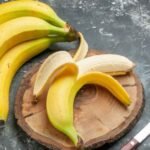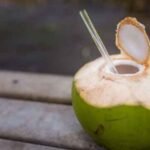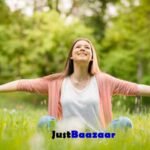Welcome to our kitchen! Cooking is not just a chore; it’s an art that brings joy to our taste buds and warmth to our hearts. Whether you’re a seasoned chef or a novice in the kitchen, we’ve got you covered with some quick and easy recipes that will elevate your cooking game. So, put on your apron and let’s dive into the world of flavorful delights!

Recipe 1: Spicy Chicken Curry :
This Spicy Chicken Curry recipe promises a burst of flavors that will tantalize your taste buds. Here’s a step-by-step breakdown:
Ingredients:
- 500g Chicken, cut into pieces
- 2 Onions, finely chopped
- 3 Tomatoes, pureed
- 2 tbsp Ginger-Garlic Paste
- 1 tsp Cumin Seeds
- 1 tsp Turmeric Powder
- 1 tbsp Red Chili Powder
- 1 tsp Garam Masala
- Salt to taste
- Fresh Coriander Leaves for garnish
- 2 tbsp Oil
Instructions:
- Prepare the Base: Heat the oil in a pan. Once it’s hot, add cumin seeds. Let them crackle and release their aroma.
- Sauté the Onions: Add the finely chopped onions to the pan. Sauté them until they turn a beautiful golden brown. This step is crucial as it brings out the sweetness of the onions, adding depth to the curry.
- Infuse with Aromatics: Stir in the ginger-garlic paste. Allow it to cook for around 2 minutes. This helps in releasing the intense flavors of ginger and garlic, which form the foundation of many Indian curries.
- Introduce the Tomatoes: Pour in the pureed tomatoes. Follow this with the turmeric powder, red chili powder, and salt. Let the mixture cook until the oil begins to separate from the masala. This indicates that the spices have infused well with the tomatoes, creating a rich and robust base for the curry.
- Incorporate the Chicken: Add the chicken pieces to the pan. Ensure they are well coated with the masala. This step allows the chicken to absorb all the flavors, resulting in a deliciously seasoned dish.
- Cook to Perfection: Cover the pan and let the chicken cook for around 15-20 minutes or until it turns tender. Cooking it covered helps in retaining the moisture and ensures that the chicken is cooked evenly.
- Final Touch: Once the chicken is cooked through, sprinkle garam masala over the curry. This adds a final layer of warmth and complexity to the dish. Garnish with fresh coriander leaves to brighten up the presentation.
- Serve and Enjoy: Your Spicy Chicken Curry is now ready to be enjoyed! Serve it piping hot with steamed rice or freshly made roti for a satisfying meal that’s sure to impress.
This recipe is perfect for those craving a spicy kick with a blend of aromatic spices. Adjust the chili powder according to your spice preference and dive into a culinary adventure that celebrates the vibrant flavors of Indian cuisine.
Recipe 2: Vegetable Pulao :
This Vegetable Pulao recipe offers a delightful medley of flavors and textures, making it a perfect accompaniment to any meal. Let’s break down the steps:
Ingredients:
- 1 cup Basmati Rice
- 1 Onion, thinly sliced
- 1 Carrot, diced
- 1 Potato, diced
- 1/2 cup Green Peas
- 2 Cloves
- 2 Cardamom Pods
- 1-inch Cinnamon Stick
- 1 Bay Leaf
- 2 cups Water
- Salt to taste
- 2 tbsp Oil
Instructions:
- Prepare the Rice: Begin by washing the basmati rice thoroughly under running water. Then, soak the rice in water for about 30 minutes. This step helps in achieving fluffy and separate grains when the pulao is cooked.
- Infuse with Aromatics: In a pressure cooker, heat the oil. Once hot, add cloves, cardamom pods, cinnamon stick, and bay leaf. Allow these whole spices to release their aroma, adding depth to the dish.
- Sauté the Onions: Add the thinly sliced onions to the cooker. Sauté them until they turn translucent and start to develop a golden hue. This caramelization of onions adds a sweet and savory flavor to the pulao.
- Add the Vegetables: Introduce the diced carrots, potatoes, and green peas into the cooker. Sauté them along with the onions for about 5 minutes. This step ensures that the vegetables are partially cooked before adding the rice.
- Incorporate the Rice: Drain the soaked rice and add it to the cooker. Gently mix the rice with the sautéed vegetables, ensuring each grain is coated with the aromatic flavors.
- Add Water and Salt: Pour in the water and add salt according to your taste preferences. The water-to-rice ratio is crucial for achieving the perfect texture. Close the lid of the pressure cooker.
- Pressure Cook: Cook the pulao under pressure for about 2 whistles. This ensures that the rice and vegetables are cooked to perfection while retaining their individual textures and flavors.
- Fluff and Serve: Once the pressure releases naturally, carefully open the lid of the pressure cooker. Gently fluff the pulao with a fork, ensuring that the grains remain separate and fluffy.
- Serve and Enjoy: Your Vegetable Pulao is now ready to be served! Pair it with some refreshing raita or any curry of your choice for a wholesome and satisfying meal.
This recipe offers a simple yet flavorful way to enjoy the goodness of vegetables infused with aromatic spices. It’s perfect for a quick weeknight dinner or as a side dish for festive occasions.
Conclusion:
Cooking delicious meals doesn’t have to be a daunting task. With the right ingredients and a little bit of love, you can create culinary masterpieces right in your own kitchen. So, don’t be afraid to experiment and unleash your inner chef. Happy cooking!
Top FAQs
- How do I know if chicken is cooked properly?
- Chicken is cooked when its internal temperature reaches 165°F (75°C) or when the juices run clear when pierced with a fork.
- What’s the best way to store vegetables to keep them fresh longer?
- Store vegetables in the refrigerator in perforated plastic bags or airtight containers to maintain freshness.
- How can I make my pasta less sticky?
- Rinse cooked pasta under cold water to remove excess starch and prevent it from sticking together.
- What’s the difference between baking powder and baking soda?
- Baking powder contains both an acid and a base, while baking soda requires an acidic ingredient to activate it. Baking powder is used in recipes that don’t contain acidic ingredients.
- How can I prevent my cake from sticking to the pan?
- Grease the cake pan with butter or oil and dust it with flour before pouring in the batter. You can also line the bottom of the pan with parchment paper.
- What’s the secret to a perfect omelette?
- Use low heat and gently fold the omelette as it cooks to ensure even cooking and a fluffy texture.
- How do I make my soup less salty if I’ve added too much salt?
- Add a peeled potato or a splash of lemon juice to absorb excess salt. You can also dilute the soup with water or unsalted broth.
- What’s the best way to season a cast-iron skillet?
- Coat the skillet with a thin layer of vegetable oil and heat it in the oven at 375°F (190°C) for an hour. Repeat this process a few times to create a non-stick surface.
- How can I prevent my cookies from spreading too much while baking?
- Chill the cookie dough in the refrigerator for at least 30 minutes before baking to solidify the fat and prevent excessive spreading.
- What’s the difference between broth and stock?
- Broth is made by simmering meat and vegetables, while stock is made by simmering bones and vegetables. Stock has a richer flavor and thicker texture due to the gelatin released from the bones.
- How can I make my salad dressings less oily?
- Add a tablespoon of mustard or honey to emulsify the oil and vinegar, creating a smoother texture.
- How do I know when oil is hot enough for frying?
- Drop a small piece of bread or a wooden chopstick into the oil. If it sizzles and bubbles rapidly, the oil is hot enough for frying.
- Can I substitute butter for oil in baking recipes?
- Yes, you can substitute butter for oil in most baking recipes, but keep in mind that butter has a lower melting point, so it may affect the texture of the final product.
- How can I prevent my rice from becoming mushy?
- Rinse the rice under cold water before cooking to remove excess starch. Use the correct ratio of water to rice and avoid stirring it too much while cooking.
- What’s the best way to reheat leftovers without drying them out?
- Reheat leftovers in the microwave with a damp paper towel covering the dish to retain moisture. You can also reheat them in the oven at a low temperature.
- How do I make gravy without lumps?
- Whisk together equal parts fat (such as butter) and flour to make a roux, then gradually add liquid (such as broth or milk) while whisking constantly to prevent lumps.
- How can I tell if an avocado is ripe?
- Gently press on the stem end of the avocado. If it yields slightly to pressure, it’s ripe and ready to eat.
- What’s the best way to peel garlic cloves easily?
- Crush the garlic cloves with the flat side of a knife or the heel of your hand to loosen the skin, making it easier to peel.
- How can I prevent my pie crust from becoming soggy?
- Blind bake the pie crust (bake it empty before adding the filling) or brush it with beaten egg white before filling to create a barrier that prevents moisture from seeping in.
- How long can I safely keep leftovers in the refrigerator?
- Leftovers can be safely stored in the refrigerator for 3-4 days. Be sure to reheat them to an internal temperature of 165°F (75°C) before consuming.
Related posts:
 ICMR’s Dietary Guidelines Advocate Salt Intake Restriction for Indians
ICMR’s Dietary Guidelines Advocate Salt Intake Restriction for Indians
 Healthy Indian Breakfast Recipes: A Nutritious Start to Your Day
Healthy Indian Breakfast Recipes: A Nutritious Start to Your Day
 Superfood Banana: Know THESE 5 Benefits of Kela
Superfood Banana: Know THESE 5 Benefits of Kela
 Why Do Apples Have Stickers? 99% of People Don’t Know the Truth, But It’s Worth Knowing
Why Do Apples Have Stickers? 99% of People Don’t Know the Truth, But It’s Worth Knowing
 A Comprehensive Diet Plan for Effective Weight Loss
A Comprehensive Diet Plan for Effective Weight Loss
 Enjoy Sipping on Tender Coconut? Know Easy Tips to Clean, Store, and Reuse Its Outer Shell
Enjoy Sipping on Tender Coconut? Know Easy Tips to Clean, Store, and Reuse Its Outer Shell
 Skim Milk vs. Whole Milk: Which is Healthier?
Skim Milk vs. Whole Milk: Which is Healthier?
 Love Donuts? Try These 5 Delectable Varieties to Satisfy Your Sweet Tooth This National Donuts Day
Love Donuts? Try These 5 Delectable Varieties to Satisfy Your Sweet Tooth This National Donuts Day
 The Secrets of Apple Cider Vinegar: Your Hair’s New Best Friend
The Secrets of Apple Cider Vinegar: Your Hair’s New Best Friend






